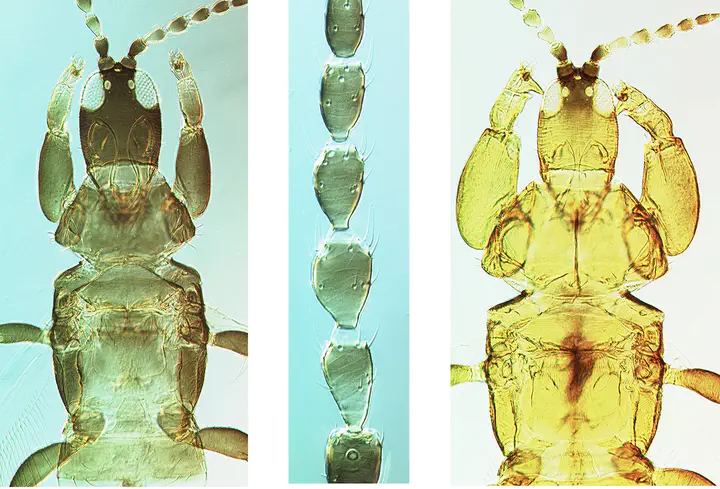
Abstract
Costs and benefits of group living are a fundamental topic in behavioural ecology. Resource availability affects individuals’ breeding prospects alone and in groups, as well as how reproduction is distributed within groups (“reproductive skew”). Here, in facultatively social thrips, we provide correlational evidence that breeding resources are associated with (1) whether solitary or social living is favoured, and (2) the degree of ovarian skew. Dunatothrips aneurae (Thysanoptera, Phlaeothripidae) cooperatively build silk “domiciles” on Australian Acacias, feeding exclusively from internal phyllode surfaces. Per capita productivity scaled differently with group size depending on domicile volume — females in small domiciles did better alone than in groups, whereas in large domiciles single and group-nesting females did equally well. Ovarian dissections revealed that in small domiciles some females were nonreproductive, indicating ovarian (i.e. reproductive) skew. Skew increased as domicile size decreased and group size increased. Breeders had smaller oocyte volume in smaller domiciles, especially those containing nonreproductives. These findings suggest group formation and reproductive skew in D. aneurae may be influenced by reproductive competition for breeding resources. Nonreproductive females in small domiciles may be reproductively suppressed, subfertile, or accumulating resources to reproduce.